 It’s been said that whatever is done to the Jews, is done for the Jews.
It’s been said that whatever is done to the Jews, is done for the Jews.
In other words, when they come out of this current crisis, they will be stronger than before.
Or to paraphrase an old Randy Pike quote, ‘Throughout history, many have tried to bury the Jewish people, but after every episode they keep surviving, outliving all the pallbearers’.
History is repeating itself before our eyes.
Ayaan Hirsi Ali, the Somali-born, Dutch-American activist and former politician spoke recently about how, “a story is also a moment when you are forced to make choices.
“I think we find ourselves today, right now, in a moment where we have to make a moral choice”.
“I sit here today and say I support Israel. No ifs. No buts. Unequivocal.”
What Ali is invoking here is ‘The exception that proves the rule’.
And that rule is, ‘There are two sides to every story’.
The rightness of Israel’s position in this conflict is the exception that proves the rule.
There is only one side to take.
No ifs. No buts.
As we know, the easiest position in any conflict is to ‘both sides’ the problem – the moral equivalence game.
Australia’s Prime Minister, Anthony Albanese, plays this game.
He is unable to condemn the horrific violence perpetrated by Hamas without in the same breath criticising Israel.
“I make no apologies for standing up against anti-Semitism”, he told parliament.
But then quickly added, “But I also have a track record of standing up for the rights of and justice for Palestinian people.”
There’s no doubt which side he is on.
As commentator Chris Kenny stated, “That might have been an acceptable line if Israel had sent its soldiers into Gaza to slaughter children, rape and murder the women, torture and murder the men and take a few hundred hostages.
“That might have been an acceptable equivalence if Israel had spent years firing rockets indiscriminately into Gaza trying to kill civilians.”
Which of course, they haven’t.
As US commentator Kayleigh McEnany has said, “This is a spiritual and moral catastrophe that has to be addressed”.
This is a clash of civilisations, a clash of cultures. A war between the civilised and the uncivilised, and only one can be allowed to win.
In Bethlehem, the birthplace of Jesus, the Palestinian Authority has cancelled this year’s Nativity Scene, ‘In honour of Hamas martyrs’.
On October 9 – two days after the slaughter of over a thousand Jews, and before there was any response from the Israelis, hundreds of ‘Free Palestiners’ gathered in front of the Sydney Opera House and chanted “gas the Jews, gas the Jews”.
This is clearly not about Gaza.
No, what we are seeing on our TV screens around the world is plain-old Jew-hatred masquerading as ‘Free Palestine’.
And while it may be true that a number of young people in these crowds might be equally at home at a Black Lives Matter march or Just Stop Oil action, that is not the point.
In their case, as Mark Twain once said, ‘No amount of evidence will ever persuade an idiot.’
It was former Labor Prime Minister Bob Hawke who once declared that Israel was ‘an inspiration, a small lone democracy in the Middle East’.
“If the bell tolls for Israel, it won’t just toll for Israel, it will toll for all mankind”, he said.
There is no doubt the overwhelming majority of Australians are on the side of Israel in this conflict, but it is also a reality that Jewish Australians are very fearful at present.
And for good reason.
In a chilling commentary, author Ramesh Thakur writes, “The solemn pledge of ‘Never Again’ (referring to the murder of six million Jews during the Holocaust) has now given way to ‘Here we go again’.
“78 years after the Holocaust, the threat of Jewish extermination is back.
“Calls go out for Jews to be gassed, and taunts that the army of Mohammed that massacred them in the seventh century will return.
“The terrorists have been valorised, Israel vilified, Jews attacked and threatened, and posters of the missing hostages torn down.”
I’m with Kayleigh McEnany, “This is a spiritual and moral catastrophe that has to be addressed”.
No ifs. No buts.
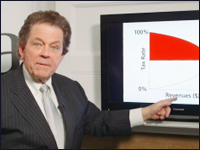 An Australian was on holidays in the south of France.
An Australian was on holidays in the south of France.
 One hundred years ago this year, four young Indigenous evangelists first preached the gospel at Ikuntji (Haasts Bluff) 200 km west of Alice Springs.
One hundred years ago this year, four young Indigenous evangelists first preached the gospel at Ikuntji (Haasts Bluff) 200 km west of Alice Springs.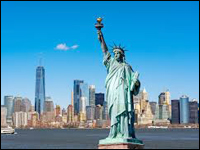 In 1946, Viktor Frankl, Holocaust survivor and renowned author of the book Man’s Search for Meaning, proposed that the Statue of Liberty on the east coast of America be complemented by a Statue of Responsibility on the country’s west coast. He was later joined in this endeavour by Stephen Covey, author of The 7 Habits of Highly Effective People. The dream was to ‘bookend’ the nation with two equally inspiring statues – one representing rights, the other responsibilities.
In 1946, Viktor Frankl, Holocaust survivor and renowned author of the book Man’s Search for Meaning, proposed that the Statue of Liberty on the east coast of America be complemented by a Statue of Responsibility on the country’s west coast. He was later joined in this endeavour by Stephen Covey, author of The 7 Habits of Highly Effective People. The dream was to ‘bookend’ the nation with two equally inspiring statues – one representing rights, the other responsibilities. It’s been said that any place you can’t leave is a prison. Australia’s present workplace regulation system is a prison, trapping a person in thousands of pages of regulations. When I ask why we lock people up like this, I am told “Oh it’s for their own good – we don’t want them to be exploited.”
It’s been said that any place you can’t leave is a prison. Australia’s present workplace regulation system is a prison, trapping a person in thousands of pages of regulations. When I ask why we lock people up like this, I am told “Oh it’s for their own good – we don’t want them to be exploited.” On the 14th of August, Prime Minister Anthony Albanese was interviewed by Neil Mitchell on Melbourne’s 3AW. Part of the interview went like this:
On the 14th of August, Prime Minister Anthony Albanese was interviewed by Neil Mitchell on Melbourne’s 3AW. Part of the interview went like this:
 From 1946 to 1948, my father served as a medic in the British Army in what was then known as British Mandate Palestine.
From 1946 to 1948, my father served as a medic in the British Army in what was then known as British Mandate Palestine.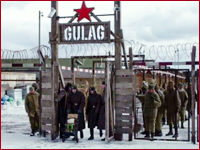 In his famous three-volume masterpiece, The Gulag Archipelago, Aleksandr Solzhenitsyn described the frozen wastelands of Siberia where political prisoners and dissidents the Soviet state considered dangerous were held (for their speech, not their actions). A gulag was a Soviet prison; an archipelago is a string of islands; hence the term ‘gulag archipelago’ – a string of camps, prisons, transit centres, secret police, informers, spies and interrogators across Siberia.
In his famous three-volume masterpiece, The Gulag Archipelago, Aleksandr Solzhenitsyn described the frozen wastelands of Siberia where political prisoners and dissidents the Soviet state considered dangerous were held (for their speech, not their actions). A gulag was a Soviet prison; an archipelago is a string of islands; hence the term ‘gulag archipelago’ – a string of camps, prisons, transit centres, secret police, informers, spies and interrogators across Siberia. It is two years since we launched our
It is two years since we launched our 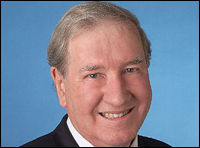 Andrew Evans was elected to the South Australian Parliament’s Upper House (Legislative Council) in February 2002 with a primary vote of 4.0%. Not bad for a first-time candidate and a new party.
Andrew Evans was elected to the South Australian Parliament’s Upper House (Legislative Council) in February 2002 with a primary vote of 4.0%. Not bad for a first-time candidate and a new party.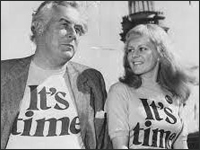 In 1911, French physician and psychologist Édouard Claparède published his observations of a female amnesiac patient. The woman was suffering from a debilitating form of amnesia which left her incapable of forming new memories. She had suffered localized brain damage that preserved her basic mechanical and reasoning skills, along with most of her older memories, but beyond the duration of a few minutes, the recent past was lost to her.
In 1911, French physician and psychologist Édouard Claparède published his observations of a female amnesiac patient. The woman was suffering from a debilitating form of amnesia which left her incapable of forming new memories. She had suffered localized brain damage that preserved her basic mechanical and reasoning skills, along with most of her older memories, but beyond the duration of a few minutes, the recent past was lost to her.